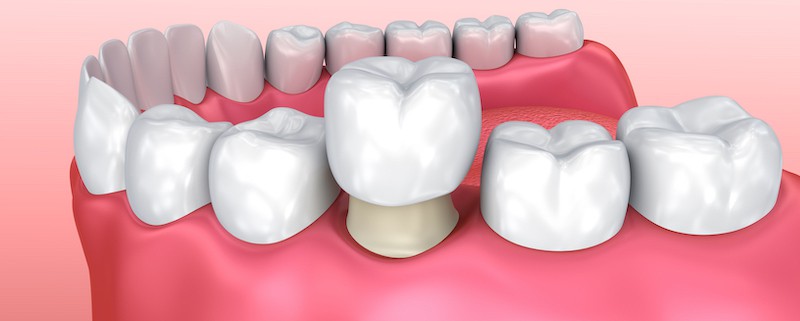Why would I need a temporary crown?
A temporary crown is used to protect your tooth while a permanent crown is being created. Temporary crowns are generally tooth shaped, colored and cover the visible portion of your natural tooth. Without a temporary crown in place while waiting for the permanent crown to be seated, the tooth may shift which could lead to the permanent crown not properly fitting.
Temporary crowns are not as strong as a permanent crown, so they do have the capability of cracking under pressure. Most temporary crowns are made with a type of acrylic which allows for tooth color and easy shaping.
Functions of temporary crowns:
- provide a safeguard for remnants of the natural tooth
- prevent potential tooth sensitivity
- keep appropriate spacing between the teeth to prevent shifting
- support chewing and esthetics during the process
Temporary crowns are generally on for 2-3 weeks. However, some patients may need their temporary crowns on for longer if they are undergoing extensive cosmetic or surgical treatment on their teeth. Dentists will not place permanent crowns over teeth that are in the process of gum grafting, extractions, and cosmetic procedures to ensure the patient has had proper healing time and has made the appropriate decisions on the look, shape, and color of their teeth. From that point, a permanent crown will be cemented onto the tooth, offering a life span of 5-15 years, depending on the person’s oral hygiene plus wear and tear. A dentist will determine when it’s time to replace it with a new crown.
Because temporary crowns are not as sturdy as porcelain crowns, they should typically not be chewed on. It is best to keep chewing to the other side of the mouth when in a temporary crown. It is also best to avoid foods that are hard, sticky, crunchy and chewy and stick to soft foods. It is also recommended to stay away from sugary foods to avoid decay from starting. Also, because temporary crown material is not very tough, your tooth might be more sensitive to temperatures causing a slight “zing” feeling when it touches the tooth.
Caring for your temporary crown:
When in a temporary crown/crowns it is best to maintain your regular oral hygiene routine. To prevent bacteria from getting to the natural tooth structure, it is best to keep the temporary crown as clean as possible without scrubbing too hard on the tooth. To avoid dislodging the temporary crown, use soft brush strokes around the crown and avoid flossing the tooth to prevent the temporary crown from popping off. Regular brushing and flossing should be carried on as regular for all other teeth.




